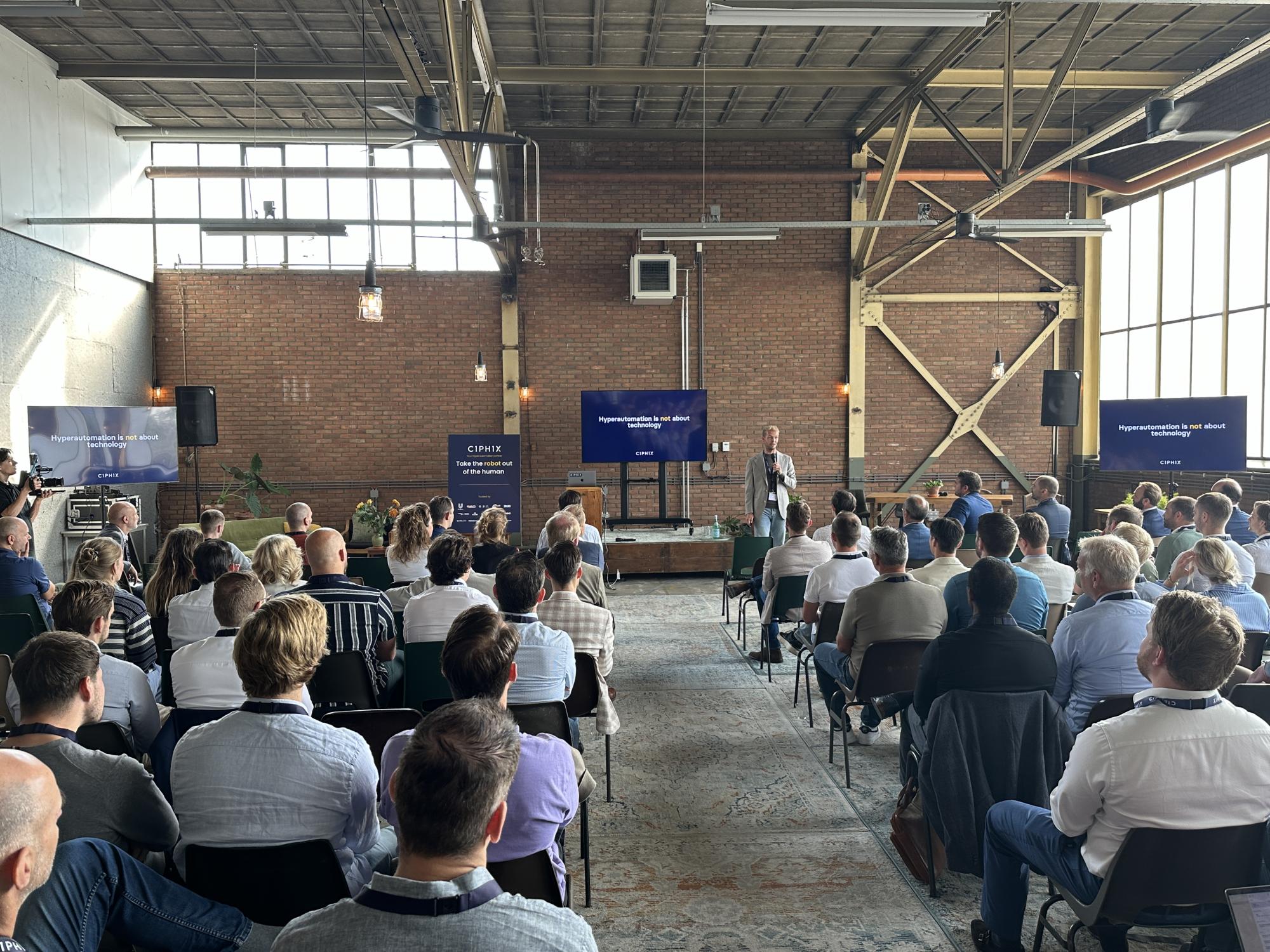Hyperautomation is all about maximizing business value with technology
25 September 2024 • News

Many companies mistakenly believe that hyperautomation is solely about using technology. However, hyperautomation should actually be focused on maximizing business value through the use of technology. This was one of the key insights from the hyperautomation event hosted by Ciphix recently. We are excited to share the most significant takeaways from the event.
Make the transition to business-driven hyperautomation
CSO Marijn van der Poel emphasized in his keynote the importance of automation driven by the needs of the business rather than by technology. According to Van der Poel, “Hyperautomation is not about embracing the latest technology; rather, it is about addressing fundamental business challenges with technology. These challenges may include increasing labor shortages, inability to meet customer demands, or increasing pressure in the organization to reduce costs. When the hyperautomation solution aligns well with the needs of the business, organizations experience higher adoption of the solution, smoother transitions, and much better long-term results.”
There are also some significant obstacles to hyperautomation projects. Organizations that see it primarily as an IT initiative, for example, may face a lack of alignment with the organization’s strategic goals or a lack of understanding of the possibilities. Van der Poel noted, “In many organizations, management has no idea what hyperautomation can deliver. Inspiring business cases from IT are then very important to convince management of this.”
Capture and demonstrate the value of hyperautomation
It’s crucial for organizations to explicitly capture and demonstrate the value of hyperautomation. CFOs and other management team members are mainly focused on financial results. If hyperautomation doesn’t lead to immediate improvements in profitability, its value is quickly questioned. Therefore, it’s important to capture and demonstrate its value. Clear definitions of what success means must be provided at the start of hyperautomation projects. Whether it involves beating the competition, improving internal processes, or creating new revenue streams, it needs to be captured. This can be achieved by asking clear business-driven questions, setting a concrete budget, and ensuring strong executive buy-in. Hyper-automation projects are often seen as an “IT party” without the involvement of management setting KPIs. Successful value capture requires close collaboration between IT and the boardroom.
IT plays an important role in driving creativity and innovation
Although hyperautomation must be driven by business needs, IT plays an important role in this process. IT departments are no longer just technical support staff; they can play a crucial role in fostering innovation and creativity within organizations. For instance, IT teams can take the lead by creating business cases that show how hyperautomation can address specific business challenges. This, in turn, encourages the business to think creatively about automating their workflows.
Low-code platforms accelerate hyperautomation
Low-code platforms are one of six technologies used by Ciphix to achieve hyperautomation. During the event, Menno Odijk, Field CTO of Mendix, led an interesting breakout session on how low-code platforms accelerate hyperautomation projects. With Mendix, companies can develop applications up to ten times faster, using 70% fewer resources. This makes low-code a perfect solution for the growing demand for software that often exceeds the budget and resources of IT departments.
A great example of the added value of low-code came from Stephen Gallagher, Football Data Scientist at Raiola. By using Mendix low-code, Raiola managed to merge data from different sources into one centralized database. The centralized database was further enhanced with AI features that help make predictions, allowing Raiola to be proactive rather than reactive.
Stephen Gallagher said, “It used to take hours to create a report on players, for example, on how they played during a game. Now we can present them with a report immediately. Our contract management and scouting of new players also work a lot more efficiently now.”
Start with low-hanging fruit
The panel discussion offered several key insights into how organisations can enhance their hyperautomation initiatives. Firstly, it is essential to begin with “low-hanging fruit,” allowing organisations to quickly demonstrate value and secure ongoing management support for projects. Tools like UiPath, in particular, provide extensive opportunities in this regard. Celonis stressed the importance of aligning automation efforts with business strategy by starting with a strategic value narrative. The panel also highlighted the significance of collaboration between business and IT. Effective collaboration prevents hyperautomation initiatives from becoming siloed and ensures they are driven by both technological and strategic considerations. In summary, hyperautomation is not just about technology, but more importantly about maximising business value through technology. Organisations should adopt a business-driven approach that prioritises their specific needs. Collaboration between IT and business is essential to overcoming challenges and ensuring successful adoption of hyperautomation projects. While low-code platforms can accelerate project delivery, success ultimately hinges on proper alignment with business priorities.




